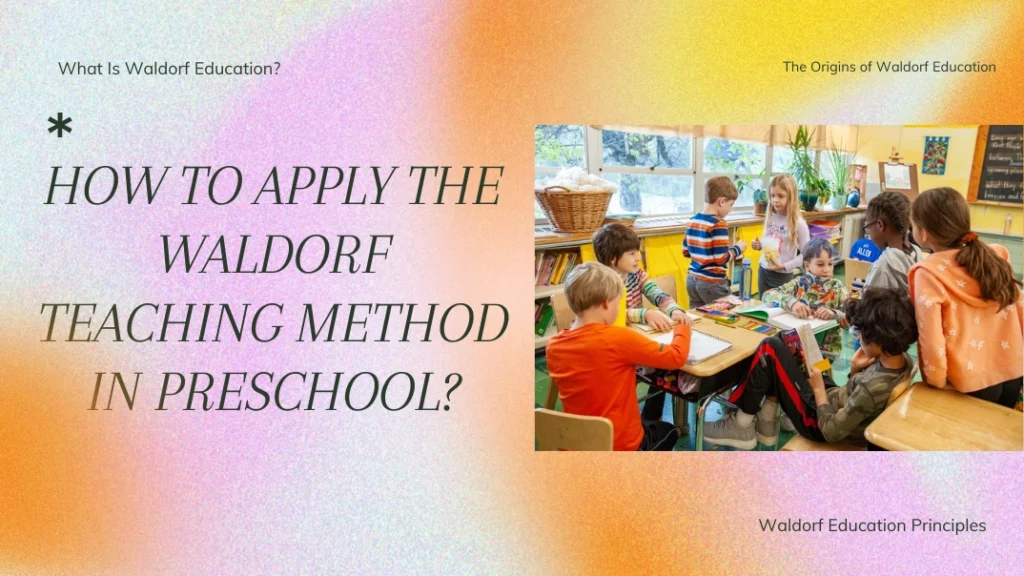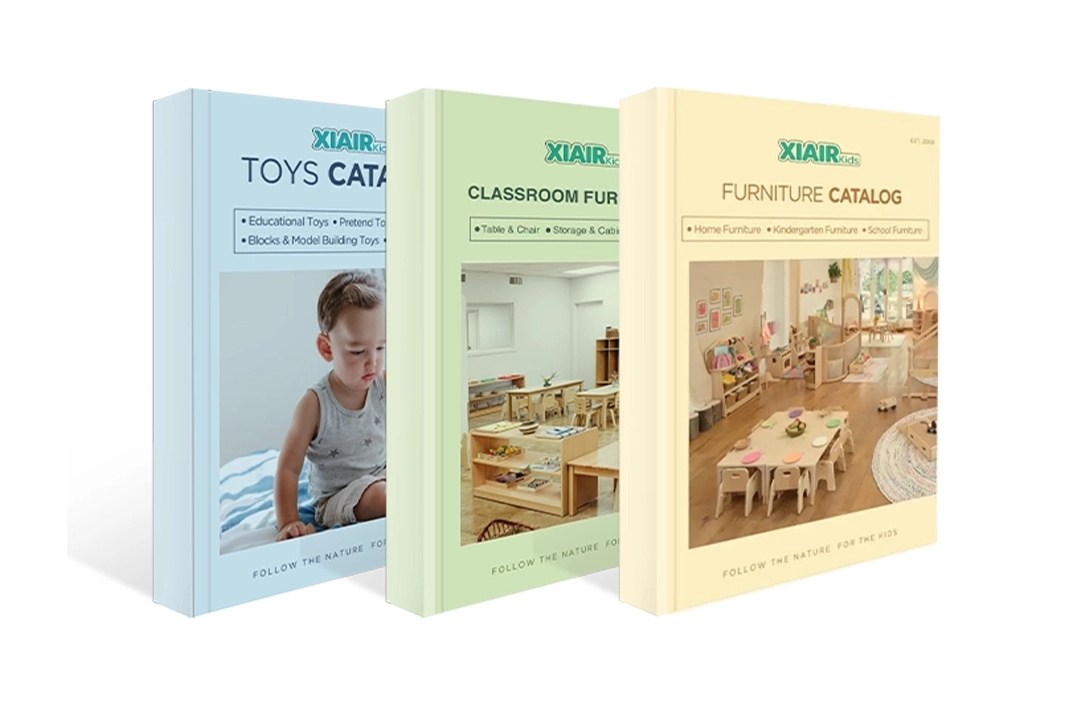The Waldorf Teaching Method has gained considerable traction worldwide, especially in preschool settings where holistic child development is prioritized. But what exactly is Waldorf education, and how can the Waldorf curriculum be effectively implemented in preschools? This method stands out because of its unique focus on developing the whole child—mind, body, and spirit—and its emphasis on creativity, independence, and connection to nature. This article will walk you through the principles of Waldorf education, its pros and cons, and how to incorporate its methodologies into your classroom.
The Waldorf Teaching Method, originating from Rudolf Steiner’s educational philosophy, prioritizes experiential learning, fostering creativity and a deep relationship with nature. By incorporating Waldorf education into preschool, children receive academic preparation and are nurtured to become creative thinkers, responsible individuals, and lifelong learners.
The Waldorf Teaching Method differentiates itself from traditional education by providing a more balanced, holistic approach to childhood learning. Through the Waldorf pedagogy, children experience a rich learning environment encompassing academic subjects, arts, practical skills, and personal development. However, educators and parents must understand that implementing the Waldorf Teaching Method requires a commitment to its core principles.
But how does the Waldorf Teaching Method differ from traditional models, and how can it be integrated into early childhood settings? Let’s begin by exploring what Waldorf education truly is.
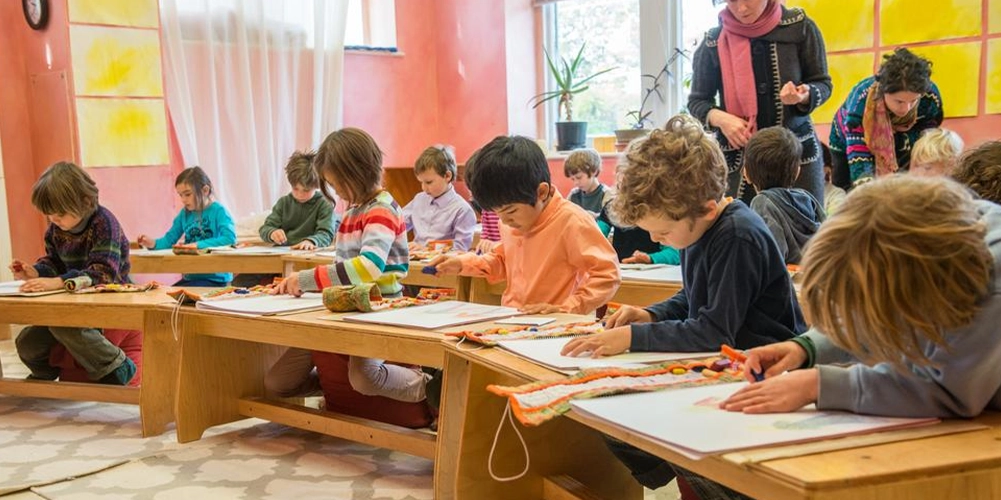
Introduction
The Waldorf Teaching Method is known for its creative, child-focused approach to learning. Rooted in the ideas of Rudolf Steiner, Waldorf education is practiced in schools and kindergartens around the world. Unlike traditional classrooms, Waldorf schools value hands-on experiences, a strong sense of rhythm, and a close connection to nature. This unique way of teaching has inspired many parents and teachers to look for new ways to support each child’s natural growth and love of learning. In the following sections, we’ll explore the main ideas and principles that make the Waldorf approach so special.
Waldorf Teaching Method: Foundations and Core Principles
The Waldorf Teaching Method believes that children learn best when their mind, body, and emotions are supported together. Started by Rudolf Steiner, this approach sees every child as unique, going through different stages as they grow. In Waldorf classrooms, learning is hands-on and creative, with lots of time for play, art, and exploring nature. A steady daily and seasonal rhythm helps kids feel secure. Teachers respect each child’s pace and adjust lessons to fit the class. These simple but powerful ideas make the Waldorf Teaching Method stand out from traditional education.
Who Is Rudolf Steiner?
Rudolf Steiner was an Austrian philosopher, social reformer, and educator best known for founding the Waldorf education movement. Steiner believed that education should nurture every part of a child’s mind, body, and spirit. His ideas shaped what is now called the Waldorf Teaching Method, or Steiner education, which is practiced in many Waldorf schools around the world. Steiner’s philosophy, known as anthroposophy, is at the heart of all Waldorf education principles.
Today, Steiner and Waldorf education are closely linked. Many Waldorf teachers, parents, and schools still study Steiner’s lectures and writings to understand the unique characteristics of this approach better. The Waldorf system encourages creativity, individuality, and a strong sense of connection with the world—a vision first set out by Rudolf Steiner over a century ago.
Because of Steiner’s influence, Waldorf schools have grown globally, including in the United States, Europe, and Asia. Rudolf Steiner’s vision of education, now called the Steiner Waldorf approach, is known for blending academic subjects with the arts, practical activities, and a respect for childhood development.
What Is Waldorf Education?
Waldorf education, sometimes called the Waldorf Teaching Method or Steiner education, is a way of teaching that focuses on the whole child. This method is used in Waldorf schools, Waldorf kindergartens, and even public Waldorf education programs. At its core, Waldorf education encourages children to learn by doing, with lots of play, art, music, and hands-on activities.
The Waldorf classroom looks and feels different from traditional schools. There are often wooden toys, natural materials, and creative spaces for children to explore. The curriculum follows the natural stages of childhood and values each child’s pace. This unique learning environment is one of the defining features of Waldorf pedagogy and what sets the Waldorf method apart from other education systems.
Families are drawn to the Waldorf approach because it emphasizes imagination, practical skills, and a love for learning that lasts a lifetime. The Waldorf education philosophy respects the importance of routine, rhythm, and a strong connection between home and school. Today, there are thousands of Waldorf schools and Steiner schools worldwide, each dedicated to helping children grow into thoughtful, confident, and compassionate adults.
Don’t just dream it, design it! Let’s chat about your custom furniture needs!
The Origins of Waldorf Education
The first Waldorf school was established in 1919 for the children of factory workers at the Waldorf-Astoria cigarette factory in Stuttgart, Germany. Rudolf Steiner envisioned an education system that developed students’ intellectual abilities and artistic, practical, and moral capacities. The Waldorf education system was designed to be dynamic and flexible, allowing teachers the freedom to create lessons tailored to the specific developmental stages of their students. The goal was to cultivate well-rounded individuals capable of contributing meaningfully to society.
Steiner and Waldorf education has since expanded globally, with thousands of Waldorf schools now operating worldwide. Each Waldorf school implements the Waldorf Teaching Method by adapting Steiner’s principles to meet their students’ cultural, geographical, and social contexts. Whether in a rural or urban school, the Waldorf curriculum focuses on developing the whole child through academic and non-academic pursuits.
Today, Waldorf education schools span multiple continents, offering preschool to high school education. These schools continue to follow the principles Rudolf Steiner laid out, focusing on each child’s holistic development.

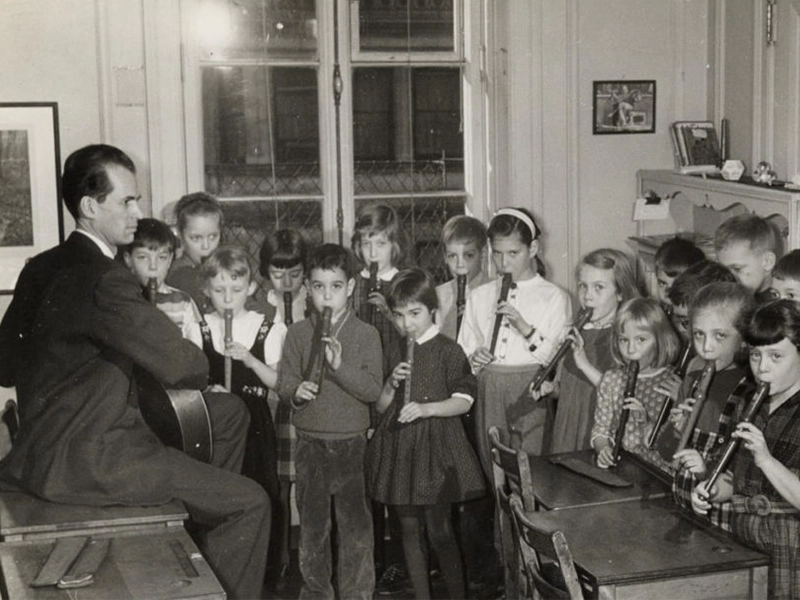
The Foundations of Waldorf Education
Waldorf education is built on the belief that children go through three distinct developmental phases: early childhood, middle childhood, and adolescence. Each of these stages is characterized by specific developmental needs, which are addressed through the Waldorf curriculum in a way that supports the child’s natural growth and learning capacity.
Early Childhood
During early childhood, Waldorf education focuses on learning through play, imitation, and sensory experiences. The Waldorf classroom environment is intentionally simple and filled with natural materials such as wooden toys and wool, which foster a connection with nature. This phase of Waldorf education allows children to develop their physical bodies and senses through meaningful tasks like cooking, cleaning, and gardening.
Critical aspects of the Waldorf preschool curriculum include:
- Creative Play: Play-based learning is the cornerstone of Waldorf pedagogy at this stage. Children are encouraged to engage in imaginative play with simple, natural toys that inspire creativity.
- Storytelling and Rhythm: Oral storytelling, songs, and verses are central to daily activities, providing a rhythmic structure that gives children a sense of security.
- Practical Life Skills: Children participate in tasks like baking bread, tidying up the classroom, and planting in the garden, which help develop motor skills and foster independence.
The Waldorf Teaching Method emphasizes nurturing children’s physical, emotional, and imaginative capacities during this stage. Through practical tasks and play, children experience the world and develop foundational skills that support future academic learning. The Waldorf classroom at this level is purposefully devoid of high-tech gadgets or screens, which aligns with the Waldorf philosophy that children should engage more directly with their surroundings.
In a Waldorf preschool, the teacher plays a crucial role in modeling behaviors for the children to imitate. This highlights another fundamental principle of the Waldorf Teaching Method: children learn best through example, not through direct instruction at such an early stage. Waldorf classrooms are often described as serene and nurturing spaces, encouraging imaginative play and exploration.
Middle Childhood
In Waldorf schools, intellectual learning begins to take shape in middle childhood. However, in keeping with Steiner’s philosophy, the Waldorf education method still emphasizes experiential learning and artistic expression as the primary vehicles for intellectual development.
Key elements of the Waldorf curriculum for this phase include:
- Main Lesson Blocks: Academic subjects like math, literature, and science are taught in intensive blocks that last for several weeks, allowing students to immerse themselves fully in the topic.
- Artistic Integration: Every subject in the Waldorf classroom is taught through artistic methods—drawing, painting, storytelling, and drama are used to make complex ideas more tangible and relatable.
- Practical Activities: In line with the Waldorf philosophy, children also engage in practical tasks, such as handicrafts and woodworking, that integrate cognitive and physical skills.
During this phase, the Waldorf school philosophy promotes the development of emotional intelligence, emphasizing creativity, imagination, and collaboration.
The Waldorf Teaching Method during middle childhood helps children develop emotionally and intellectually, preparing them for the more rigorous academic demands of adolescence. Teachers in Waldorf schools are known to stay with the same group of students for several years, fostering strong, trusting relationships that contribute to a stable learning environment. This continuity is a crucial feature of the Waldorf education system, distinguishing it from traditional schools where students frequently change teachers.
Waldorf education also emphasizes outdoor play and connection to nature during middle childhood. Daily outdoor activities, nature walks, and field trips are integrated into the Waldorf curriculum to help children connect with the environment, further reflecting the core values of Waldorf schools.
Adolescence
As children move into adolescence, the Waldorf curriculum transitions to fostering critical thinking, ethical reflection, and social responsibility. Waldorf schools at this stage emphasize independent learning, community engagement, and pursuing personal interests.
Key aspects of this phase include:
- Critical Thinking: Adolescents are encouraged to engage in philosophical debates, research projects, and analytical tasks to develop their reasoning and reflective abilities.
- Service Learning: In keeping with the Waldorf principles, students participate in community service projects emphasizing social responsibility and ethical awareness.
At this stage, the Waldorf Teaching Method helps adolescents understand their role within the community and the wider world. Waldorf teachers become mentors, supporting students in developing independence and a strong sense of purpose.
In Waldorf schools, adolescence is a time of self-discovery and personal growth. The curriculum is designed to challenge students intellectually and emotionally, guiding them to become empathetic, thoughtful individuals ready to contribute positively to society. Waldorf education schools worldwide continue implementing these principles to ensure students graduate with a well-rounded education beyond mere academic achievement.
Your perfect classroom is one click away!
Waldorf Education Principles
Several core principles define the Waldorf education philosophy. These principles guide how teachers interact with students and shape the curriculum to foster a holistic learning experience.
The Human Being as a Spiritual Being
One of the central beliefs in Waldorf pedagogy is that children are spiritual beings with unique destinies. The Waldorf teaching method encourages the child’s spiritual development, not in a religious sense, but by nurturing a sense of wonder and reverence for life. Waldorf classrooms are designed to inspire awe through the beauty of natural materials, seasonal rhythms, and artistic expression.
The Waldorf Teaching Method is closely aligned with the rhythms of the natural world, with daily, weekly, and seasonal rhythms helping to create a predictable, secure environment for young children. In a Waldorf preschool, for example, songs, verses, and seasonal activities help children connect with the natural flow of time. The spiritual aspect of Waldorf education emphasizes the development of each child’s unique potential and sense of self, helping them to grow into empathetic, socially responsible individuals.
Freedom in Teaching
In the Waldorf system, teachers are granted considerable freedom to deliver lessons. The Waldorf education method allows educators to adapt the curriculum to the needs and interests of their students, ensuring that learning remains engaging and relevant. This creative freedom distinguishes Waldorf schools from traditional education systems, where rigid curricula can limit individualized learning experiences.
Waldorf teachers are given the autonomy to craft lessons that inspire curiosity and creativity. They use their observations of the children’s development to guide the content and methods of instruction. This freedom allows teachers in Waldorf schools to personalize the learning experience for each child, making education an organic and evolving process rather than a standardized one.
The Waldorf Teaching Method values the role of the teacher as both an educator and a creative guide, allowing for dynamic, responsive learning environments that encourage students to explore their interests and talents.
Experiential Learning and Relationship Building
Waldorf education prioritizes experiential learning, where children engage with subjects through hands-on activities. Whether painting, gardening, or storytelling, students in a Waldorf classroom learn by doing. Additionally, the close relationship between teacher and student is another hallmark of Waldorf pedagogy. Teachers often stay with the same group of students for several years, fostering deep connections that enhance the learning experience.
The Waldorf Teaching Method places great importance on the relationships that form within the classroom. Having the same teacher guide students over several years builds a strong bond of trust and understanding, creating a supportive environment where students feel safe to express themselves and take risks in their learning. This continuity is essential to the Waldorf education system, promoting stability and emotional security throughout a child’s school journey.
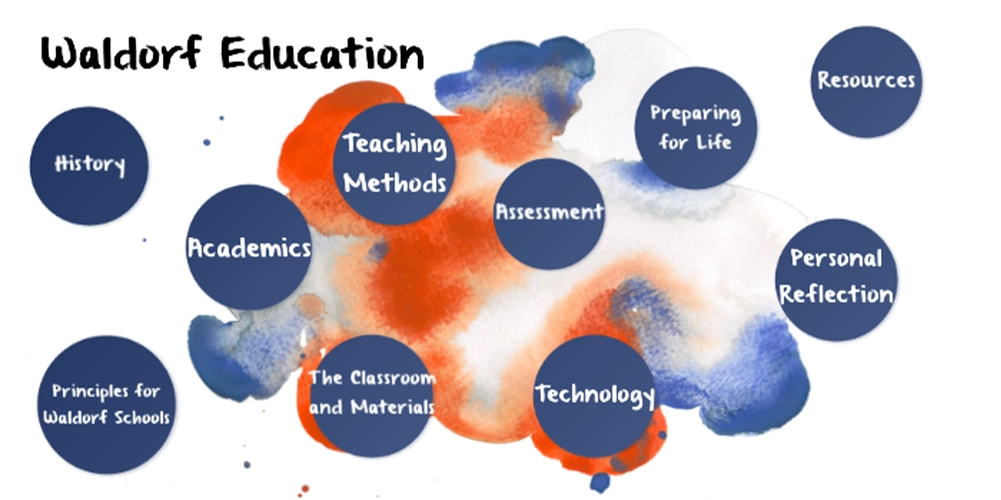
Pros and Cons of the Waldorf Teaching Method
When considering the Waldorf education system for preschool settings, evaluating its strengths and potential challenges is essential. Below is a comprehensive look at the pros and cons of the Waldorf approach.
Pros:
- Learning is hands-on and age-appropriate
The Waldorf teaching method emphasizes experiential, tactile learning, allowing children to engage in activities that match their developmental stage. - Learning is play-based
Play is a vital aspect of learning in Waldorf preschools, promoting creativity, cognitive development, and social skills. - Technology isn’t used in the classroom.
The Waldorf education model deliberately minimizes the use of technology, encouraging children to engage directly with the world around them. - Students learn how to take an active role in their education
The Waldorf method encourages children to be self-directed learners, fostering independence and curiosity. - Waldorf schools produce well-rounded individuals.
The holistic approach of Waldorf education supports the development of intellectual, emotional, and artistic capacities, helping children become well-rounded individuals. - Waldorf-educated individuals have a lifelong passion for learning
Graduates of Waldorf schools often maintain a deep love of learning throughout their lives, as the Waldorf philosophy instills curiosity and a sense of wonder.
Cons:
- Lack of focus on academics
- Critics of Waldorf education argue that the delayed introduction of formal academics, such as reading and mathematics, can put students at a disadvantage compared to their peers in traditional settings.
- Teachers teach the same children for multiple years
- While this promotes strong relationships, it may limit the student’s exposure to different teaching styles and perspectives.
- Limited use of technology
- Although many parents appreciate the tech-free approach of Waldorf education, others feel that it may leave students unprepared for a technology-driven world.
Waldorf education schools are often criticized for their reluctance to incorporate technology into the classroom. While this is intended to foster deeper personal and creative engagement, some parents and educators worry that children in Waldorf schools may not develop the necessary digital literacy skills for the modern world. Despite this, many proponents of the Waldorf Teaching Method argue that focusing on creativity and problem-solving skills in Waldorf schools adequately prepares students for future challenges.
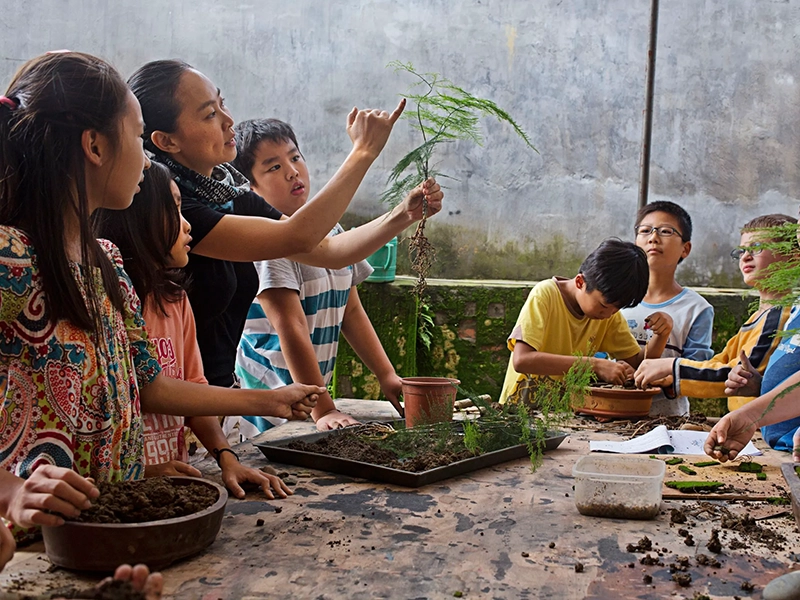
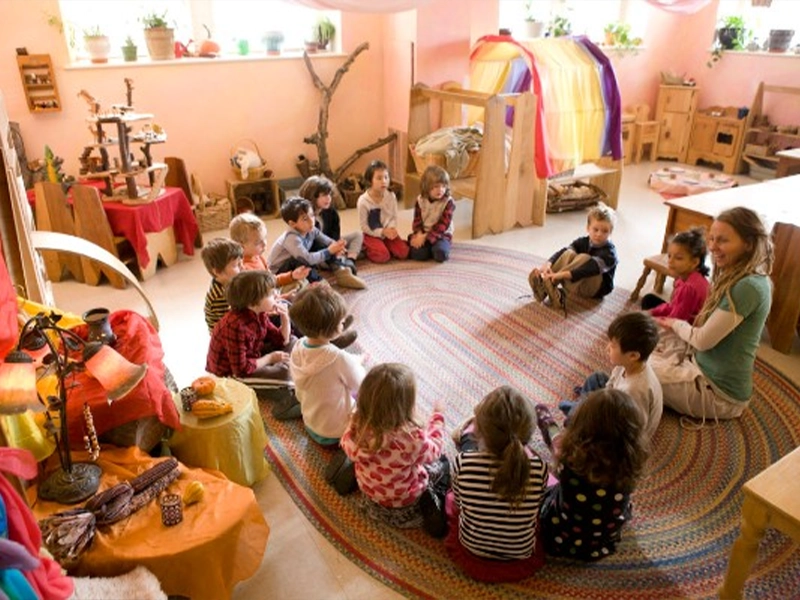
Creating a Waldorf-Inspired Learning Environment
A Waldorf-inspired classroom is carefully designed to reflect the heart of the Waldorf Teaching Method. Every detail—from the color of the walls to the choice of furniture—plays a role in supporting children’s learning and well-being. Let’s look at the most critical aspects of creating a space where Waldorf education can genuinely thrive.
Why the Classroom Environment Matters in Waldorf Education
In the Waldorf Teaching Method, the classroom environment is seen as an extension of the learning process. Waldorf schools understand that children absorb more than just what is taught—they are deeply influenced by their surroundings every day.
- The Classroom as the “Third Teacher”:
In Waldorf education, the physical classroom is not just a backdrop but an active part of the teaching team. The space gently guides children’s behavior and mindset. When a Waldorf classroom is organized with intention, it naturally supports focus, creativity, and collaboration among students. This is why many Waldorf schools invest in carefully planned layouts, soft lighting, and uncluttered areas. - Calm, Inviting Spaces:
Waldorf classrooms avoid loud colors or harsh lights. Instead, they feature gentle hues, natural sunlight, and plenty of quiet corners. This setting helps children feel safe and comfortable, which in turn encourages them to explore, ask questions, and try new things. A calm environment is a hallmark of Waldorf education and is closely connected to the success of the Waldorf teaching approach. - Movement and Flexibility:
Unlike traditional classrooms, a Waldorf classroom is not fixed. Furniture can be moved to make space for group work, circle time, or imaginative play. Flexible layouts promote both independence and cooperation. Children are invited to participate in arranging their classroom, which teaches responsibility and respect for shared spaces—a key value in Waldorf education schools. - Connection to the Senses:
Every element, from the texture of a wool rug to the scent of wooden shelves, is chosen to support children’s sensory development. The Waldorf learning method encourages teachers to use materials that invite touch and interaction. These sensory experiences ground children in the present moment and help them feel connected to their environment. - Supporting the Waldorf Curriculum:
A thoughtfully designed classroom supports all parts of the Waldorf curriculum. Whether it’s storytelling in a cozy corner, painting at a sunlit table, or gathering for morning songs, the environment enhances every learning experience. The Waldorf Teaching Method reminds us that children thrive when their classrooms are as nurturing and inspiring as the lessons themselves.
Choosing the Right Materials and Furniture for Waldorf Classrooms
Selecting the right furniture and materials is a key part of creating an authentic Waldorf classroom. The choices you make will shape not just the look and feel of the school but also how children learn and interact each day.
- Natural Materials at the Heart of Waldorf Design:
Waldorf schools and kindergartens prefer natural materials like wood, wool, and cotton for furniture and classroom items. Solid wood chairs, child-sized tables, and natural wooden shelves are common choices. These pieces are not only durable and safe but also help children connect with the natural world, a core idea in Waldorf education philosophy. You’ll often find wool rugs, cotton curtains, and handwoven baskets as well. - Child-Sized and Ergonomic Furniture:
The Waldorf Teaching Method values independence, so furniture is chosen with the child in mind. Look for low tables, small wooden chairs, open bookcases, and coat racks placed at child height. Ergonomic design supports good posture and healthy movement, which is essential in Waldorf pedagogy. - Simplicity and Versatility:
In Waldorf classrooms, furniture and materials are kept simple to encourage open-ended play. Play stands (wooden frames for draping silks or creating imaginative scenes) can become a puppet theater, shop, or reading nook. Art easels, large woven baskets for blocks, and stackable stools all offer multiple uses and support the Waldorf learning approach. - Safety and Sustainability:
Safety is always a priority. Waldorf education schools select furniture with smooth edges, stable bases, and non-toxic finishes. Sustainable production is also essential, aligning with Waldorf’s principles of respect for the earth. Consider eco-friendly wooden furniture, bamboo storage shelves, or FSC-certified products for your classroom. - Aesthetic Harmony:
Every item in a Waldorf classroom is chosen to support a sense of beauty and order. Coordinated colors, soft fabrics, and natural textures create a peaceful atmosphere. You’ll often see wool floor rugs, cotton cushions, and nature-inspired decorative items in the space.
Product Checklist for a Waldorf Classroom
| Product Type | Description / Use | Waldorf Features |
|---|---|---|
| Child-Sized Wooden Tables | For group work, meals, and art activities | Natural materials, ergonomic design |
| Wooden Chairs | Supports proper posture and independence | Sturdy, child-sized, easy to move |
| Open Shelving/Bookcases | Storage for books, toys, and classroom materials | Low height for easy access, natural wood |
| Play Stands / Puppet Theaters | For imaginative play and scene creation | Versatile, encourages creativity |
| Art Easels & Craft Tables | Painting, drawing, and crafts | Adjustable, easy to clean |
| Large Woven Baskets | Organize blocks, toys, and art supplies | Soft, natural fibers, flexible use |
| Wool or Cotton Area Rugs | Define group spaces and reading corners | Soft texture, natural colors |
| Floor Cushions & Beanbags | Create cozy, inviting reading or rest areas | Comfortable, safe materials |
| Nature Tables/Display Shelves | Show seasonal items and nature collections | Connects classroom to nature |
| Coat Racks at Child Height | Foster independence and order | Proper height for self-care |
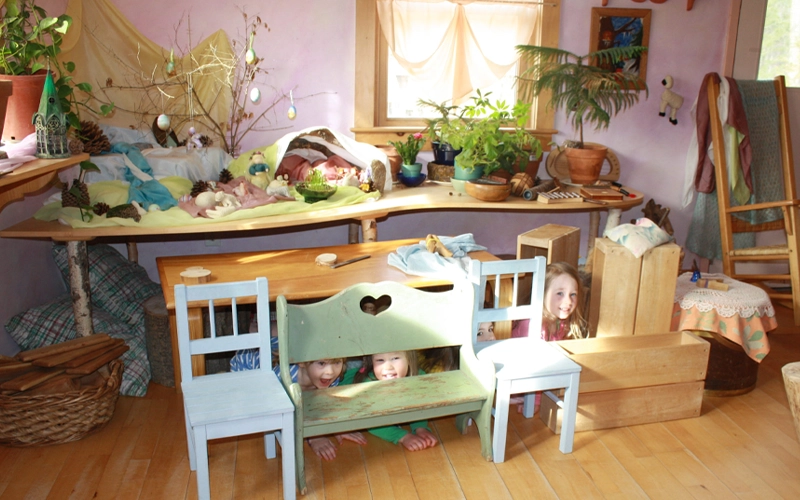
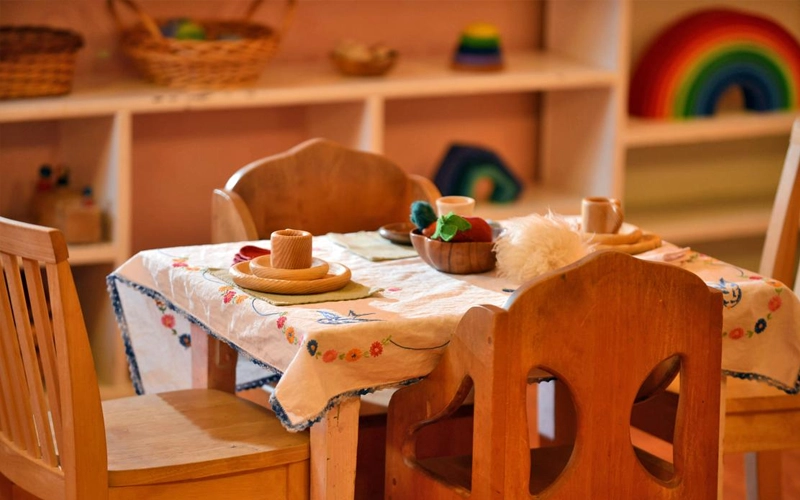
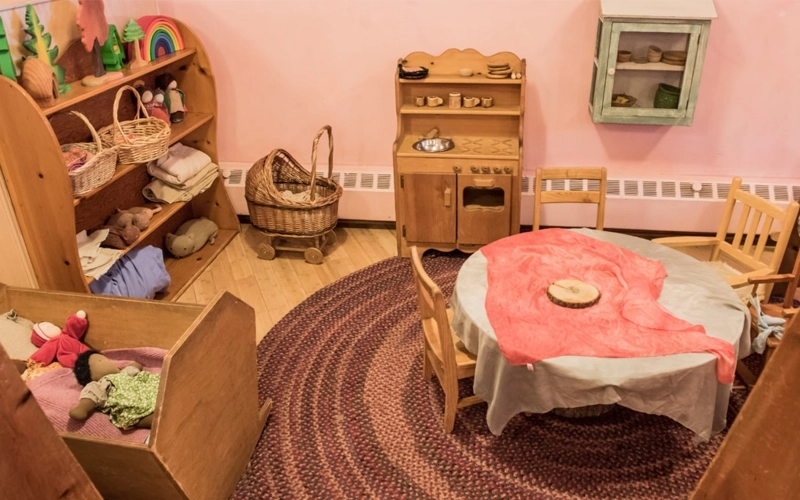
Designing Open-Ended Play and Learning Areas
A key feature of the Waldorf Teaching Method is making room for open-ended play and hands-on exploration. In Waldorf classrooms, teachers use thoughtful layouts and versatile products to encourage imagination and social growth.
- Flexible Spaces for Imaginative Play:
Waldorf schools make great use of play stands, which can become a shop, theater, or cozy hideaway with just a few silk scarves or pieces of fabric. Wooden building blocks, stacking crates, and simple tables let children design their play worlds. - Simple, Multi-Use Materials:
Toys and props in Waldorf classrooms are chosen for their versatility. Waldorf dolls, wooden animals, woven baskets, felt mats, and silk scarves allow kids to invent their own stories, build scenery, and explore movement. This supports the Waldorf philosophy of learning through doing. - No Screens or Battery Toys:
Following Waldorf’s pedagogy, there are no electronic gadgets in the classroom. Instead, children engage deeply with wooden puzzles, nature-inspired objects, and creative craft supplies. - Zones for Different Activities:
Spaces are set up for a variety of uses—a reading corner with floor cushions and a low bookshelf, a building area with tree slices and baskets of loose parts, an art table with paints and clay, and a puppet stage for storytelling. - Encouraging Social and Emotional Growth:
With these open-ended resources, children naturally learn to cooperate, share, and communicate, which is a hallmark of Waldorf education.
Typical Waldorf Play & Learning Products:
| Product | Use in Classroom |
|---|---|
| Play Stands | Building forts, shops, puppet theaters |
| Wooden Building Blocks | Creative construction, counting, and sorting |
| Silk Scarves & Fabrics | Costumes, movement, scenery for imaginative play |
| Waldorf Dolls & Puppets | Storytelling, role play, social learning |
| Woven Baskets | Storing toys, natural objects, or art supplies |
| Floor Cushions & Rugs | Cozy areas for reading, resting, or circle time |
| Art Easels & Craft Tables | Painting, drawing, collaborative projects |
| Low Shelves & Bookcases | Accessible storage, book display for kids |
| Tree Slices & Loose Parts | Building, stacking, nature-based exploration |
These open-ended products help bring the Waldorf Teaching Method to life, turning any classroom into a place where creativity, independence, and discovery are part of everyday life.
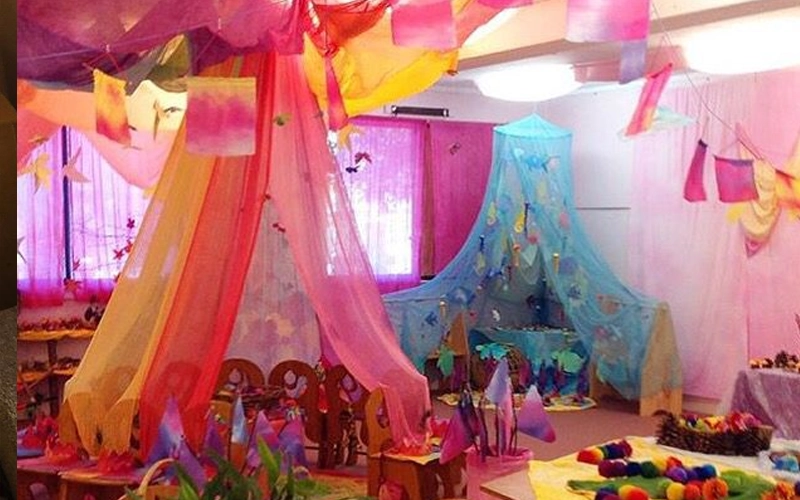


Bringing Nature and Seasonal Rhythm Into the Classroom
The Waldorf Teaching Method places a strong focus on connecting children with nature and honoring the rhythm of the seasons. In a Waldorf classroom, the environment is carefully designed to reflect the cycles of the natural world, a core part of Waldorf pedagogy and philosophy.
- Nature Tables and Seasonal Displays:
In Waldorf schools and Waldorf education preschools, a nature table is a central feature. Children collect and display seasonal items like stones, leaves, and flowers, turning the classroom into a living reflection of nature’s changes. This hands-on activity is a hallmark of the Waldorf Teaching Method and supports the Waldorf learning approach by encouraging observation and respect for the earth. - Maximizing Natural Light and Plant Life:
A typical Waldorf classroom is filled with sunlight and fresh air, supporting children’s well-being and learning. Plants and indoor gardens are common in Waldorf education schools, helping students learn to care for living things. Teachers in Waldorf schools may use window crystals or sun catchers to bring natural colors and beauty into the space. - Seasonal Crafts and Natural Decorations:
The Waldorf curriculum includes many handcrafts using wool, felt, and wood. Children create decorations and art projects that celebrate each season, such as spring garlands or autumn mobiles. This creative activity is central to Waldorf methodology and helps build the rhythm of the Waldorf classroom. - Outdoor Learning and Nature Walks:
The Waldorf approach encourages regular time outside, whether in a school garden or on nature walks. These experiences are deeply integrated into the Waldorf education system, helping children learn through direct experience and reinforcing the values of the Waldorf Teaching Method. - Daily and Weekly Rhythms:
Teachers following the Waldorf education philosophy plan routines and seasonal festivals in sync with the rhythms of nature. Morning circles, weekly baking, and seasonal celebrations are all classic examples of the Waldorf system in action.
In every Waldorf classroom, these natural elements and rhythms make learning come alive. The Waldorf Teaching Method teaches children to notice the world around them and feel part of something greater—an essential part of Waldorf education’s unique characteristics.
Your perfect classroom is one click away!
Supporting Independence and Creativity Through Layout
A key goal of the Waldorf Teaching Method is to help children become independent thinkers and creative problem solvers. The way a Waldorf classroom is arranged can make a big difference in supporting both independence and creativity for every child.
- Accessible Furniture and Materials:
In Waldorf schools, all tables, chairs, shelves, and storage units are set at a child-friendly height. This encourages children to find what they need, tidy up after activities, and make their own choices throughout the day. The Waldorf classroom is designed to empower children and promote self-confidence, which is a core principle of the Waldorf education philosophy. - Open Layouts for Free Movement:
The Waldorf Teaching Method recommends open floor plans with clear pathways. Furniture is arranged so children can move freely between activity zones, such as play areas, reading corners, and art tables. This freedom supports creative exploration, collaboration, and physical coordination, all of which are valued in Waldorf pedagogy. - Choice and Flexibility:
The Waldorf approach allows children to choose where and how they work or play. Having multiple spaces—like a quiet corner for reading, a large table for group art, or an open area for building—lets students follow their interests and express their individuality. This supports the unique characteristics of the Waldorf learning method. - Self-Directed Activities:
Teachers using the Waldorf education model encourage self-initiated projects and open-ended tasks. Materials are displayed in an organized and inviting way so children can start activities on their own and clean up when finished. This routine helps students develop responsibility and a sense of ownership in the classroom. - Encouraging Collaboration:
While independence is key, the layout also fosters teamwork. Group seating, shared materials, and open spaces for circle time or performances give students the chance to work together, share ideas, and solve problems collectively—a central aspect of the Waldorf education system.
With a thoughtful classroom layout, the Waldorf Teaching Method creates an environment where children develop life skills, self-motivation, and creative confidence—qualities that last far beyond the preschool years.
Integrating Outdoor Learning Areas
In the Waldorf Teaching Method, learning doesn’t end at the classroom door. Outdoor spaces are seen as vital extensions of the Waldorf school environment, offering children fresh air, movement, and endless opportunities to connect with nature.
- Design Outdoor Classrooms with Nature in Mind
Waldorf education schools often create garden areas, sand pits, or quiet corners outdoors. Use natural materials—like wooden benches, tree stumps for seating, or bamboo fencing—to keep the outdoor space in harmony with the Waldorf philosophy. - Plan for Seasonal Activities
Schedule time for nature walks, gardening, and seasonal celebrations. Children might plant bulbs in the spring, gather leaves in the fall, or build snow forts in the winter. Outdoor learning supports the rhythm and sensory experiences that are so important in Waldorf pedagogy. - Provide Open-Ended Play Materials Outside
Offer loose parts such as logs, rocks, branches, and ropes for building and exploring. Avoid plastic playground equipment—natural elements fit better with the Waldorf approach and encourage creativity. - Create Sheltered Spaces
Include a shaded area or a simple outdoor shelter so children can learn and play outside in all weather. Outdoor chalkboards, low tables, and nature art stations add variety to outdoor lessons. - Support Exploration and Independence
Outdoor learning in Waldorf education is about giving children the freedom to explore. Safe boundaries, visible teachers, and simple ground rules allow kids to take risks and learn at their own pace. - Extend the Waldorf Curriculum Outdoors
Many Waldorf schools bring indoor routines outdoors—morning circle, storytelling, painting, and even snack time can happen outside. This extension reinforces the unique characteristics of the Waldorf Teaching Method.
Thoughtfully integrating outdoor learning areas will help children thrive, support whole-child development, and truly bring the Waldorf Teaching Method to life in your school or preschool.
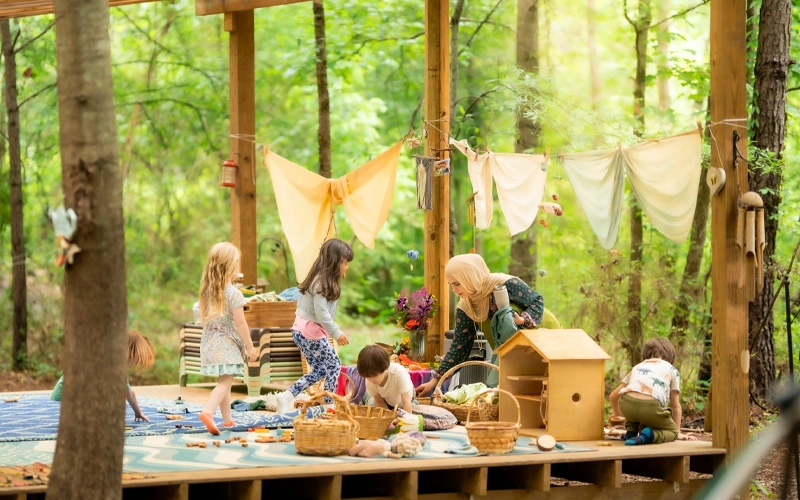
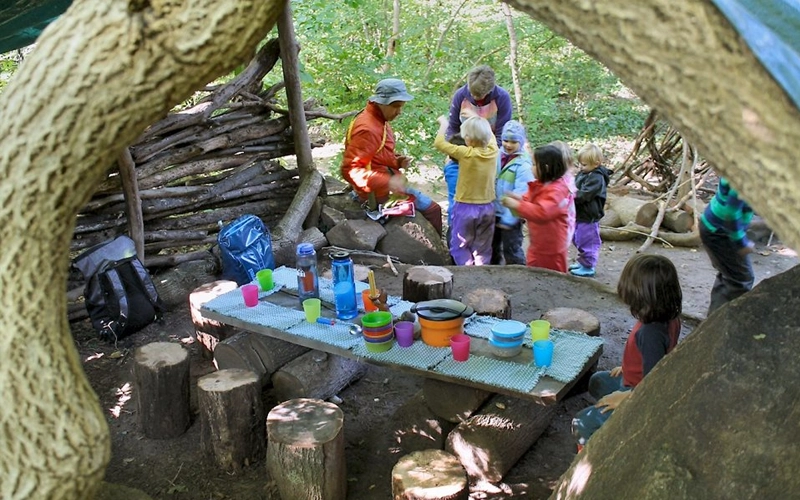
Practical Tips for Setting Up a Waldorf-Inspired Classroom
Setting up a Waldorf classroom requires more than just choosing beautiful furniture. The Waldorf Teaching Method is all about creating an environment that supports each child’s growth—mind, body, and spirit. Here are some practical suggestions for anyone preparing a Waldorf education classroom or preschool:
- Start with a Clear Plan:
Before bringing in any furniture, decide how the Waldorf classroom will be used throughout the day. Consider daily and seasonal rhythms, group activities, quiet corners, and space for movement. Waldorf’s pedagogy values flexibility and flow. - Prioritize Natural Materials:
Select solid wood tables and chairs, cotton or wool rugs, and natural fiber curtains. These materials help make the Waldorf school environment calm, welcoming, and healthy. Avoid plastic or metal when possible to stay true to the Waldorf education philosophy. - Create Defined Zones:
Use shelves and furniture to organize the classroom into areas for play, art, reading, and group work. In the Waldorf Teaching Method, having clear zones supports the unique characteristics of the Waldorf learning method. - Keep Decor Simple and Rhythmic:
Avoid clutter and bold decorations. Instead, display seasonal crafts, nature tables, and soft colors. The Waldorf approach believes that visual rhythm helps children feel secure and inspired. - Use Child-Sized Furniture and Open Storage:
Low tables, chairs, and shelves give children independence. They can reach materials on their own, which is central to Waldorf education schools and the Waldorf teaching philosophy. - Plan for Movement:
Include enough open floor space for circle time, games, and creative activities. The Waldorf education method encourages movement as part of daily routines. - Make Maintenance Easy:
Choose washable covers, sturdy furniture, and storage baskets to keep the classroom organized and clean. The Waldorf Teaching Method values beauty, but it must be practical for busy teachers and active children. - Consult Waldorf Furniture Suppliers:
When in doubt, reach out to suppliers who understand the Waldorf system and can recommend products that fit your vision and the Waldorf curriculum.
Setting up a Waldorf-inspired classroom is an investment in every child’s future. When you use the Waldorf Teaching Method to guide your choices, you create a space where children can thrive, just as Rudolf Steiner and Waldorf schools intended.
Step-by-Step Guide: Setting Up a Waldorf Classroom
Setting up a Waldorf classroom can seem overwhelming at first, but following a straightforward step-by-step process makes it both simple and effective. The Waldorf Teaching Method emphasizes thoughtful planning, natural materials, and flexibility. Here’s a practical guide to help you create a warm and inspiring Waldorf classroom from the ground up:
Step 1: Define the Classroom Purpose and Daily Rhythm
- Decide if the space will be for a Waldorf preschool, kindergarten, or elementary class.
- Sketch out your daily and weekly rhythm, including time for free play, circle time, art, storytelling, and outdoor activities.
- The Waldorf education philosophy values routines and transitions that help children feel secure.
Step 2: Choose a Calm, Light-Filled Space
- Whenever possible, select a room with natural sunlight and good airflow.
- Soft wall colors and simple window coverings support the welcoming Waldorf classroom atmosphere.
- Arrange furniture to take advantage of natural light, and consider adding plants or window crystals.
Step 3: Select Natural, Child-Sized Furniture
- Invest in solid wood tables, child-sized chairs, open shelving, and storage baskets.
- Keep pathways clear and make sure every child can reach supplies independently, following Waldorf pedagogy and supporting independence.
- Place reading corners, art tables, and nature tables where children naturally gather.
Step 4: Organize Activity Zones
- Use shelves or rugs to define zones for building, reading, art, music, and imaginative play.
- Make each area flexible so it can change as children’s interests and classroom needs shift.
- The Waldorf learning method encourages variety—don’t overcrowd, but leave space for movement and discovery.
Step 5: Add Open-Ended Play Materials and Seasonal Decorations
- Include play stands, wooden blocks, silk scarves, Waldorf dolls, and craft supplies.
- Rotate materials and update nature tables or seasonal displays throughout the year to reflect changes in nature.
- The Waldorf approach values beauty and rhythm, so display children’s artwork and handmade decorations.
Step 6: Maintain a Tidy, Organized Space
- Teach children to care for the classroom by putting things away after use.
- Use baskets, trays, and labeled shelves for easy access and clean-up.
- An orderly environment supports the unique characteristics of the Waldorf classroom and the Waldorf Teaching Method.
Step 7: Create a Welcoming Entry and Communicate with Families
- Set up a friendly entrance with a coat rack, shoe shelf, and space for parent communication.
- Display a daily schedule, upcoming events, and seasonal news for families to see.
- The Waldorf education system encourages strong home-school partnerships.
Quick Tips:
- Start simple and build as you go—every Waldorf classroom evolves.
- Involve teachers, children, and parents in decorating and maintaining the space.
- Reach out to Waldorf furniture suppliers for customized solutions that meet your needs.
With careful planning and an open mind, anyone can use the Waldorf Teaching Method to create a classroom where children feel inspired, valued, and ready to learn every day.
Don’t just dream it, design it! Let’s chat about your custom furniture needs!
Common Mistakes to Avoid in Waldorf Classroom Setup
Setting up a Waldorf classroom can be both exciting and challenging. The Waldorf Teaching Method is unique and even experienced teachers or school leaders can make mistakes if they’re new to Waldorf education. Here are some of the most common pitfalls to avoid:
- Using Too Many Commercial or Plastic Materials
One of the biggest mistakes in Waldorf schools is filling the classroom with brightly colored plastic toys and commercial products. The Waldorf philosophy values natural, simple materials that spark the imagination. Always choose wood, cotton, wool, and other natural fibers for classroom furniture and learning materials. - Overcrowding the Space
Trying to fit in too much furniture or too many toys can make the classroom feel cluttered and overwhelming. The Waldorf approach believes in “less is more.” Keep open spaces for movement and free play, and rotate toys and supplies throughout the year instead of displaying everything at once. - Ignoring Rhythm and Routine
Waldorf classrooms need a steady rhythm to help children feel safe and focused. Skipping daily or seasonal routines can make students anxious and disrupt the Waldorf learning method. Plan for regular circle time, storytelling, seasonal crafts, and transitions. - Forgetting the Importance of Nature
Another common mistake is not bringing enough of the natural world into the classroom. An actual Waldorf classroom should reflect the seasons, with nature tables, plants, and seasonal decorations as core features of the Waldorf Teaching Method. - Neglecting Teacher and Student Comfort
Don’t overlook the comfort of teachers and children. Child-sized furniture, soft lighting, and cozy reading areas help everyone feel at home, which is vital for the Waldorf education philosophy. - Skipping Consultation with Experts
Sometimes, schools try to “DIY” a Waldorf setup without consulting those familiar with Waldorf pedagogy. This can lead to poor layout choices or the purchasing of unsuitable products. Work with experienced Waldorf furniture suppliers and educators whenever possible. - Lack of Flexibility
Sticking too rigidly to a room layout or over-planning can limit creativity and natural flow. The Waldorf classroom should evolve as the children grow and change—be ready to adapt your setup as needed.
Avoiding these mistakes helps ensure your Waldorf classroom is a welcoming, creative, and nurturing environment that genuinely supports the Waldorf Teaching Method.
How to Incorporate the Waldorf Curriculum into Your Preschool Program?
If you are considering introducing the Waldorf education method into your preschool, there are several vital steps to follow to align with the principles of Waldorf pedagogy.
Create a Consistent Schedule
Waldorf classrooms are known for their structured yet flexible schedules. A predictable daily rhythm gives children a sense of security and helps them transition smoothly between activities. Circle time, storytelling, and hands-on tasks like baking or gardening should be integrated into the day to create a balanced and engaging learning experience.
The Waldorf Teaching Method places great emphasis on rhythm and routine. In a Waldorf preschool, children follow a predictable, consistent schedule that includes time for creative play, practical tasks, artistic activities, and quiet reflection. This rhythm helps children feel safe and grounded, providing a solid learning and personal growth foundation.
Add Natural Toys and Furniture
The Waldorf teaching philosophy places a strong emphasis on the use of natural materials. Waldorf classrooms are filled with wooden furniture, handmade dolls, and natural fibers such as wool and cotton. The simplicity of these materials helps reduce overstimulation and encourages children to engage more deeply in creative play.
In a Waldorf preschool, the environment is vital to the learning process. The Waldorf curriculum recommends using toys made from natural materials, which are tactile, simple, and open-ended, allowing children to explore and use their imaginations freely. Avoid plastic or commercial toys that might dictate how they should be played. Instead, use toys that enable children to engage in pretend play, storytelling, and peer collaboration.
Encourage Practical Life Skills
Incorporating life skills such as cooking, cleaning, and crafting into the Waldorf curriculum allows children to develop responsibility, independence, and fine motor skills. These activities are not just chores—they are learning experiences that foster a sense of accomplishment and community.
The Waldorf Teaching Method considers these practical tasks essential to a child’s development. In a Waldorf classroom, children might help prepare snacks, set up the room for the day’s activities, or assist in tidying up after playtime. These activities teach essential life skills, promote teamwork, and give children a sense of responsibility and belonging within the classroom community.
Explore Nature with Children
Outdoor play is central to the Waldorf education philosophy. Whether it’s a nature walk, gardening, or free play in a natural environment, these activities help children build a connection to nature, an essential component of Waldorf education. Regular exposure to nature fosters a sense of wonder, curiosity, and environmental responsibility.
A Waldorf preschool often incorporates seasonal activities that reflect the natural world’s rhythms, such as planting seeds in the spring, collecting leaves in the fall, or building snow sculptures in the winter. These outdoor activities encourage physical activity and deepen children’s appreciation for the world around them. The natural world is seen as the best classroom in Waldorf education, offering endless opportunities for exploration and learning.
How Is Waldorf Different from Regular School?
Waldorf education stands apart from traditional schooling in several key areas, notably its developmental approach, learning methodology, and overall philosophy. Here’s how Waldorf schools differ from regular schools:
- Can the Waldorf method be adapted for modern classrooms?
The Waldorf education method discourages the use of technology, while modern classrooms often rely heavily on digital tools. Adapting Waldorf principles to meet the demands of today’s educational landscape is a challenge many schools face. - Is the Waldorf method suitable for all types of children?
Although the Waldorf method is holistic and child-centered, it may not work for all children, particularly those who thrive in a more structured academic environment. - How does the Waldorf method address individual learning differences?
The Waldorf education system allows children to learn at their own pace, fostering inclusivity. However, the lack of standardized assessments might not provide enough support for children with specific learning needs.
Waldorf schools often attract families who prioritize creativity, emotional development, and a slower pace of academic introduction. However, some critics argue that children in Waldorf schools may not be as well-prepared for the standardized tests and academic rigor of traditional schooling. The Waldorf education system is designed to meet the needs of each child, but it may not align with the expectations of families seeking a more traditional, structured education.
Conclusion
Incorporating the Waldorf Teaching Method into your preschool can lead to a transformative educational experience where children grow emotionally, intellectually, and socially. The Waldorf method encourages creativity, independence, and a lifelong love of learning by focusing on hands-on, experiential learning and fostering a connection to nature.
By adopting the Waldorf philosophy, you can create a nurturing environment where children thrive academically and in all areas of life. The unique characteristics of Waldorf education provide a holistic, child-centered alternative to traditional education, cultivating well-rounded, curious individuals ready to face future challenges. The Waldorf education system is ideal for fostering profound, meaningful learning experiences that last a lifetime, making the Waldorf Teaching Method an excellent choice for preschool settings looking to offer something beyond the conventional.
By embracing the Waldorf Teaching Method and aligning your preschool program with its core principles, you can create a rich, engaging learning environment that supports the holistic development of every child. This method ensures that children are prepared for school and life.
FAQs
What is a Waldorf school’s main difference?
A Waldorf school follows the Waldorf Teaching Method, focusing on whole-child development through art, imagination, and nature-based activities, rather than early academic drills. This unique approach sets it apart from traditional education models.
Why are natural materials essential?
Waldorf education cherishes wood, wool, cotton, and other natural elements. These sensory-rich materials create calm classrooms that align with the core values of the Waldorf approach and support children’s emotional well-being.
When do children start learning formal academics?
In the Waldorf curriculum, formal reading and writing are introduced around age 7. Before that, children engage in storytelling, handicrafts, and rhythmic play, laying a strong foundation without early academic pressure.
Do Waldorf classrooms include outdoor time?
Yes—outdoor learning is a staple of Waldorf schools. Activities include gardening, nature walks, and seasonal festivals, extending the Waldorf pedagogy beyond the classroom walls.
How can layout support independence?
A well-designed layout includes child-height shelves, open play areas, and flexible seating. This empowers children to access materials, collaborate, and self-direct—key features of the Waldorf education philosophy.
How do I avoid overcrowding a Waldorf classroom?
Stick to simple, open-ended furniture like wooden tables and open shelving, rotate materials over time, and leave enough space for movement. This minimalist “less is more” design honors Waldorf methodology and enhances creativity.

